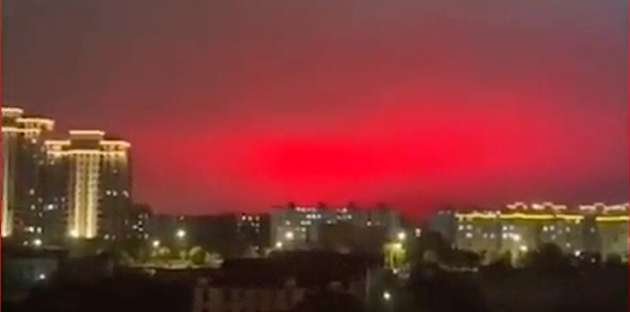The United States has long portrayed itself as a model of democratic resilience and global leadership. Its economic power, institutional checks and balances, and robust civil society were held up as evidence of an enduring system. But when COVID-19 struck, the American model faltered—publicly, painfully, and predictably.
With over one million lives lost, tens of millions infected, and social trust at an all-time low, the pandemic didn’t just test America—it exposed a governance model in crisis. From fragmented federalism to failed crisis communication, from institutional fatigue to moral ambiguity, the response was less a coordinated national strategy than a chaotic patchwork of contradictions.
The U.S. didn’t lack resources. It lacked cohesion, vision, and the political will to act for the common good.
1. The Mirage of Preparedness
In theory, the United States was among the best-prepared nations for a pandemic. It had detailed pandemic playbooks, the world’s top biomedical research institutions, and an emergency stockpile system.
But in practice, the system was hollow.
The Strategic National Stockpile was under-resourced. Hospital surge capacity was insufficient. Pandemic simulation reports were ignored. Early warnings—both domestic and international—were downplayed. As the virus spread, critical supply chains for masks, ventilators, and tests broke down.
Preparedness had become a buzzword, not a reality. For years, budgets were slashed, contingency plans forgotten, and global health infrastructure deprioritized. When the crisis arrived, America discovered it had been practicing theater, not readiness.
2. Federalism Without Coordination
The U.S. federal system was designed to balance state and national powers. But in the context of a fast-moving pandemic, this structure became a governance trap.
With no consistent national mandates, states were left to craft their own responses. Some locked down early and aggressively; others denied the threat. Travel restrictions, business closures, and mask mandates varied county by county, creating confusion and inconsistency.
Florida banned mask mandates while California imposed them. Texas resisted shutdowns even as hospitals overflowed. States hoarded supplies and competed on the open market, undercutting each other instead of collaborating.
In a pandemic, viruses don’t respect state lines. But America’s response did—and the result was fragmentation, inefficiency, and needless loss of life.
3. Communication Failure: A Crisis of Credibility
In any emergency, consistent, truthful communication is essential. But during the pandemic, America’s messaging was often contradictory, politically influenced, or simply incoherent.
At the federal level, the Trump administration frequently undermined its own health experts. Statements about the virus “disappearing,” bleach injections, or “herd immunity” by infection sowed public confusion. Meanwhile, state and local officials gave conflicting guidance.
Even scientific agencies like the CDC and FDA appeared to bow to political pressure, revising guidelines in ways that eroded public trust. Mixed messaging about masks, asymptomatic spread, and vaccine safety led to widespread skepticism.
By the time credible guidance became available, large segments of the population had stopped listening.
4. A Society Fragmented by Mistrust
Americans entered the pandemic not as a united public, but as a polarized society divided by party, race, class, and worldview. The virus deepened those divisions.
Mask-wearing became a political statement. Lockdowns triggered armed protests. Vaccines were not seen as medical breakthroughs but as partisan tools. Social media became a breeding ground for conspiracy theories—QAnon, anti-vaccine groups, and disinformation campaigns found fertile ground.
Surveys revealed disturbing truths: millions believed COVID was a hoax, that hospitals were inflating deaths, that the vaccine was part of a tracking program. Even as body counts rose, belief in scientific consensus fell.
The collapse of trust wasn’t new. But COVID turned it from a slow burn into a wildfire.
5. Corporate Capitalism Over Public Good
The pandemic also laid bare the limitations of America’s privatized, profit-driven approach to health and welfare.
Health insurance tied to employment left millions vulnerable when jobs disappeared. Hospitals, operating on thin margins due to for-profit models, were quickly overwhelmed. Pharmaceutical companies set pricing strategies even in a public health emergency. Nursing homes—many owned by private equity firms—became death traps.
Meanwhile, billionaires grew wealthier than ever. Amazon, Zoom, and pharmaceutical giants posted record profits. Stock markets surged even as food banks faced unprecedented demand.
For many Americans, COVID-19 became a brutal reminder that the system protects capital, not people.
6. The Workforce Burnout and Exodus
Essential workers were hailed as heroes—then promptly forgotten.
Nurses, doctors, grocery clerks, sanitation workers, and delivery drivers faced extreme risk with minimal support. Personal protective equipment was scarce. Hazard pay disappeared quickly. Mental health support was virtually nonexistent.
As the months dragged on, these workers became exhausted and demoralized. Many left their professions altogether. The so-called “Great Resignation” was partly driven by this collapse of dignity and safety at work.
Teachers faced constant hostility—forced to return to classrooms amid infection spikes, while contending with political attacks on curriculum and safety measures.
By the end of 2022, American labor wasn’t just strained—it was broken.
7. When Crisis Doesn’t Lead to Reform
In many countries, the trauma of COVID-19 sparked reforms: expanded healthcare systems, better worker protections, renewed public investment. But in the United States, meaningful structural change stalled.
Calls for universal healthcare were drowned out. Paid family leave proposals failed in Congress. Vaccine equity never materialized fully. The infrastructure bill excluded significant public health funding. And the temporary eviction moratorium lapsed without permanent housing solutions.
Rather than seizing the crisis as a transformative moment, U.S. politics returned to familiar gridlock. Lobbyists regained influence. Misinformation continued unchallenged. The status quo endured—exposed, weakened, but unchanged.
It was as if America had survived a once-in-a-century catastrophe only to decide: “Let’s move on.”
8. Global Image in Decline
Perhaps most damaging was the effect on America’s global standing.
The world watched as the U.S.—the supposed leader of the free world—failed to manage a basic health crisis. Allies questioned its reliability. Developing nations saw hypocrisy in its vaccine hoarding and slow support for global aid. Autocracies pointed to U.S. chaos as justification for centralized control.
Where once American institutions were exported as models, they now became cautionary tales. America First became America Alone—and the damage to soft power may be long-lasting.
Conclusion: A Warning Not Yet Heeded
COVID-19 didn’t create America’s crisis—it revealed it. A nation rich in innovation but starved of solidarity. A political system more loyal to party than people. An economy that rewards speculation over service.
For all its technological prowess and democratic ideals, the U.S. failed one of the most basic tests of governance: protecting its people in a time of collective danger.
The pandemic should have been a moment of reckoning. Instead, it became a missed opportunity—one that future generations may judge harshly.
Because the next crisis is coming—whether it’s climate-related, economic, or biological. And unless America learns from the mirror COVID held up, it may find itself even less prepared when the storm hits again.

